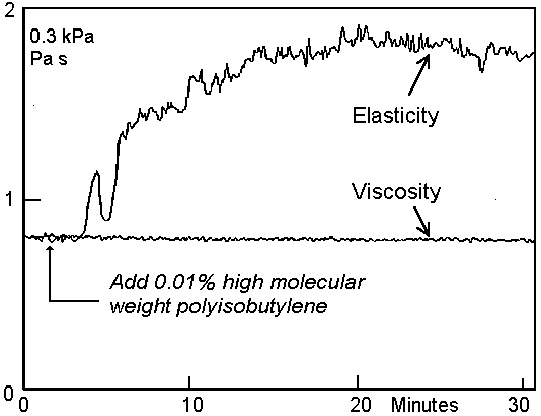Arthur S. Lodge | home
Curriculum Vitae | For Sale: Elastomer Theory | The Editor Regrets... | Science & Religion: Common Features | The First Published Experiment | Science & Religion: Features, not in Common | Types of Scientific Experiment | Evolution | Global Warming | For Sale: Elastic Liquids | For Sale: Body Tensor Fields in Continuum Mechanics | The Lodge Stressmeter | The Educational Opportunity Bank | Compost Temperatures | Pressure Difference Measurement | A. S. Lodge: Reports & Publications | Viscosity Measrement at Very High Shear Rates | Zero Recoil: a Polymeric Tube Model Disaster
The Lodge Stressmeter
The LODGE STRESSMETER is a slit-die rheometer that measures elasticity and viscosity for liquids in steady shear flow in on-line and sample modes. Higher shear rates and shear stresses can be obtained than any accessible with other rheometers. It could give improved quality control on polymer synthesis and in other industrial processes.
The instrument is manufactured and marketed by Chemical ElectroPhysics, Inc.
Non-linear Elasticity and Viscosity On Line: The Lodge STRESSMETER
¨ Non-linear better than linear
An International Union of Pure and Applied Chemistry Working Party showed that two low-density polyethylene resins with significantly different film-blowing properties gave the same values for the dynamic modulus G¢ (a linear elastic property) but measurably different values for the first normal stress difference N1 (a non-linear elastic property). The resins could not be differentiated by means of intrinsic viscosity or GPC measurements.
The Lodge StressmeterÒ is a new slit-die rheometer designed to measure N1 and the viscosity h of liquids in steady shear flow, in both on-line and sample modes, up to shear stress and shear rate values higher than those accessible with any available commercial rheometer. The Stressmeter pressure-difference-measuring system has been shown to resolve about 0.02 psi at ambient pressures up to 2000 psi (136 atmospheres) which are used in some polymerization reactors.
¨ Sensitive on-line sensor
N1 is extremely sensitive to small changes in the high-molecular-weight end of polymer molecular weight distributions for concentrated polymer solutions (fig.1) and molten polymers.

Figure 1: Adding 1 part in 10,000 of high molecular weight polyisobutylene to a stirred concentrated solution of medium molecular weight polyisobutylene doubles N1 but has negligible effect on h
¨ Robust Rheometer
The Stressmeter has no moving parts (other than a gear pump); the pressure transducers, designed and constructed in house, are very stable. As a result, the Stressmeter is robust. By way of demonstration, the Stressmeter which was used to record the fig.1 data was once struck with a hammer during measurement; there was no noticeable effect on the data or subsequent performance.
¨ Molten Polymer Elasticity
One version of the Stressmeter has been designed for making measurements on molten polymers and other high viscosity liquids. Fig.2 shows agreement between the values of N1, over a common range of values of shear stress, obtained for a sample of degassed molten polystyrene from a cone-and-plate rheometer and a Melt Stressmeter.

Figure 2: For molten degassed polystyrene, Stressmeter N1 data agree with cone-and-plate data (kindly provided by Prof. J. Meissner)
¨ Oils at high shear rates
Another model of the Stressmeter has been used for measurements (in sample mode only) of N1 and h for oils and other low-viscosity liquids at shear rates up to 106 and 107 sec-1 respectively at temperatures up to 200oC. END